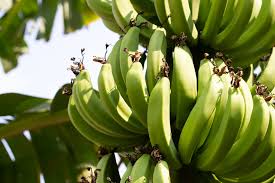Plastic free mycelium surfboards by Steve Davies
Are mushroom surfboards the wave of the future? Could mushrooms be the environmentally friendly, plastic free future of surfing? Steve Davies has built a surfboard using fungus to make it more biodegradable.
That is unquestionably the opinion of Porthcawl, Wales based, board designer Steve Davies, age 23 Mr. Davies is creating his own plastic free surfboard using an inventive material formed from the root-like structures of mushrooms.

https://ukdaily.news/environment-are-mushroom-boards-the-future-of-surfing-352455.html
That might sound a little weird, but there are alternatives to polystyrene, polyurethane, and resin boards, which can linger in landfills for hundreds to thousands of years before decomposing.
Around 400,000 boards are produced annually, according to Mr. Davies. In the end, he said, even when it does break down, it may get into the fish’s environment and bio-accumulate, so people will end up eating this polystyrene plastic.
On the first full-size prototype, mushrooms are growing. The former design student created the idea as part of his senior thesis at Cardiff Metropolitan University, where he sought to address the negative environmental effects of the sport.
At this point, Mr. Davies began researching fungus. A substance called mycelium is present in a variety of fungus. It develops a root-like structure that serves many different natural environments.
Also, it has been discovered that its features hold a great deal of promise for other artificial purposes. The mycelium roots develop between the skeleton, which is formed of materials like straw, to generate a substance that resembles polystyrene and is perfect for moulding a board.
Eighty percent of the thousands of surfboards produced annually are not sustainable. Mushrooms wouldn’t be sufficient on their own. The organic substance would just wash away in the absence of a waterproof covering, which is not ideal while looking for waves.
Mr. Davies has experimented with a variety of natural sealants, such as beeswax and linseed oil, to discover a solution that will benefit the ride and have no negative environmental effects.
For the surfing community, who directly experience the effects of plastic waste, the sport’s ecological impact is of utmost importance. Steve Davies expects that some day, professional surfers will utilise mushroom boards.
Projects like Steve’s, in the opinion of activist Izzy Ross from Surfers Against Sewage, are exactly what the neighbourhood needs. She explained that the industry is absolutely not doing enough, and she believes the work being done by these tiny projects.
And the brilliant brains behind them to address this is excellent, but the issue is more systemic than that. Many surfers and water enthusiasts are aware of the harm that specific factors can cause.
Is it truly viable when competing with established, quick manufacturing lines?
Steve Davies said that mycelium’s qualities may be similar to those of a foam like polyurethane. He doesn’t see any reason why mushroom boards couldn’t be utilised at the top elite level of surfing, right down to beginner level. It will require a little bit of tweaking and the correct kind of mushroom to grow it.
The majority of surfers are really interested in it. They are just waiting for the changes to take place. Of course, if mushroom boards can’t be made economically, this idea won’t mean anything.
Other board designers have experimented with comparable materials in recent years, but they have not yet been able to displace the standard plastic-heavy materials used in producing boards.
Mr. Davies thinks that these boards may hold the key if given the proper support and infrastructure. Mycelium roots develop into a substance like polystyrene.
We can grow a mycelium board under the appropriate circumstances in around 21 days, he claimed. The goal is to establish it as the new standard. The new design guidelines would emphasise connecting with nature, and many more things like that would be awesome.
We’re utilising the water, we should give back to the sea, and it should be a cyclical model, Mr. Davis continued.
Source: UK Dailynews


